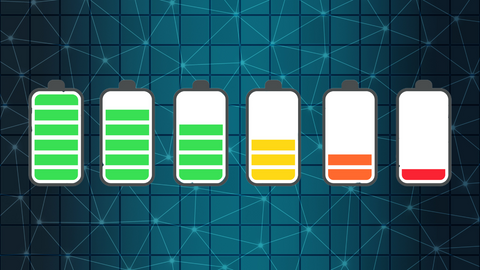
Battery Degradation
Compartir
Tips to Extend the Battery Life of Your Smart Devices: Care and Maintenance
Battery degradation over time may slow due to several factors, and specific details may vary depending on battery type (for example, lithium-ion, nickel-cadmium, or lead) and usage conditions.
Here are some common factors that contribute to decreased battery performance:
Capacity Degradation:
Over time, a battery's ability to store and deliver energy decreases. This means the battery holds less charge and provides less run time. This is commonly known as "capacity loss." The rate of capacity degradation can vary between different battery chemistries.
Aging by Cycles:
Charging and discharging a battery constitutes a cycle. Lithium-ion batteries, for example, have a limited number of charge cycles (usually between 400 and 800 depending on the brand of the device) before their capacity degrades significantly. Each cycle contributes to the gradual wear of the battery.

High temperatures:
Exposure to high temperatures, either during operation or storage, can accelerate the aging process of a battery. Heat causes chemical reactions within the battery that can lead to loss of capacity and reduced battery life.
Download Depth:
Fully discharging a battery before recharging can cause additional stress on the battery, leading to faster capacity degradation. It is often recommended to avoid deep discharges whenever possible. The ideal is not to exceed 20% at least.
Overload:
Overcharging a battery, especially for long periods, can cause damage and reduce its lifespan, however modern devices and chargers often include mechanisms to prevent overcharging once 100% is achieved.
Underload:
Leaving a battery in a state of deep discharge for prolonged periods can cause irreversible damage. Lithium-ion batteries, in particular, can become unstable if discharged to 0% and left in that state for too long.

Age:
Even when not in use, batteries gradually degrade over time due to natural chemical processes. This is known as "calendar aging." The aging rate according to the schedule depends on the battery chemistry.
Manufacturing Quality:
The quality of the battery and its components, including electrodes and electrolyte, can affect its long-term performance. Lower quality batteries can degrade more quickly.
Usage Patterns:
The way a battery is used can also affect its lifespan. Heavy use, fast charging, and frequent deep discharges can lead to faster capacity loss. Currently there are devices that can charge at 120W and achieve 0% to 100% in less than 20 minutes, however, the same manufacturers indicate that you only use the maximum capacity when you have an emergency, and regularly limit the device configuration. the charging power to a more appropriate one so that your battery lasts in optimal conditions much longer.
How to extend battery life and maintain its performance?
- Try to keep your equipment in a cool, dry place.
- Avoid extreme temperatures.
- Charge your device before the battery reaches a critically low level, Ideal 20%.
- Use the manufacturer's recommended charger and follow recommended charging practices.
- If you are going to store your equipment for an extended period, do so with a charge level between 20% and 50%.








